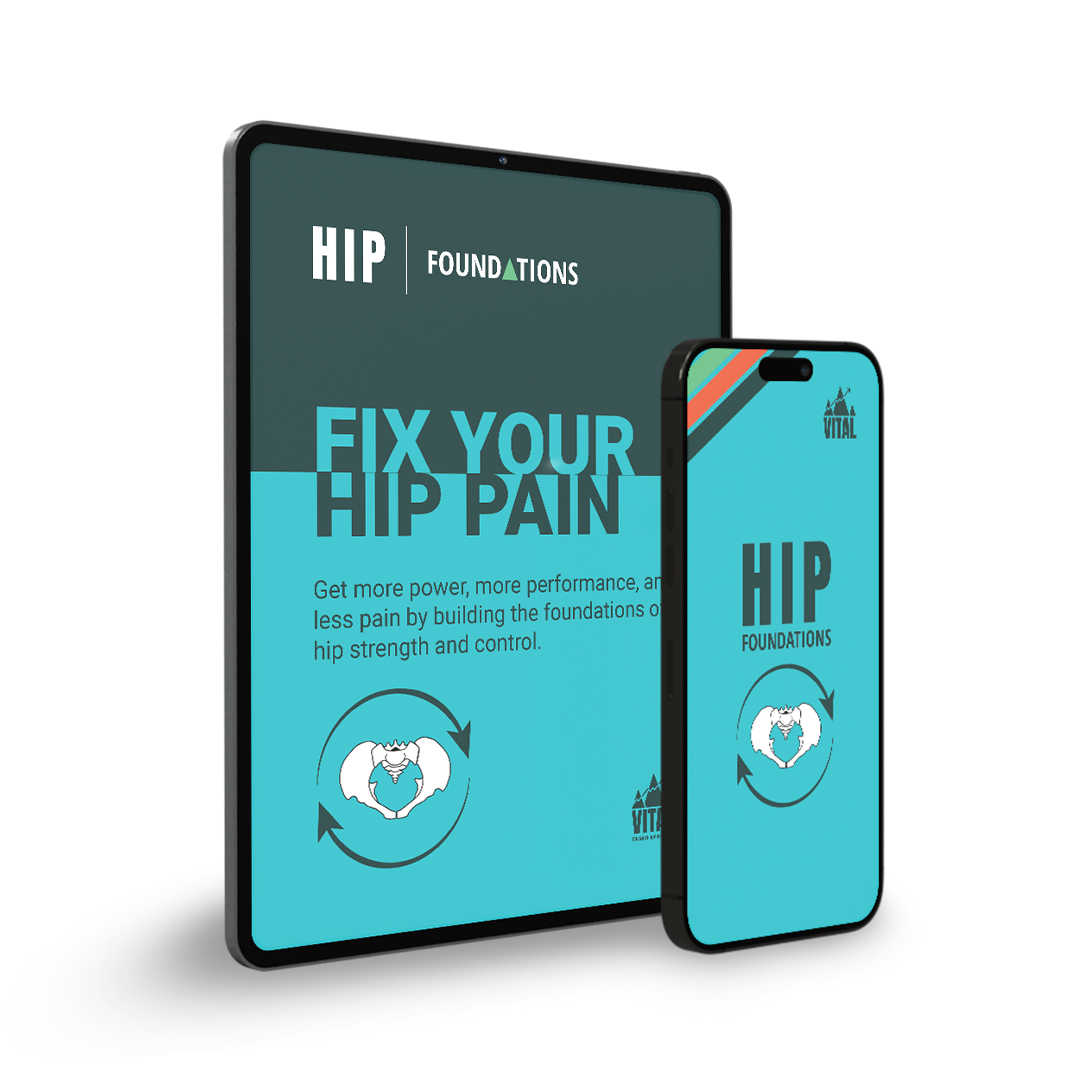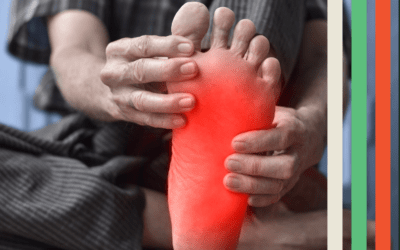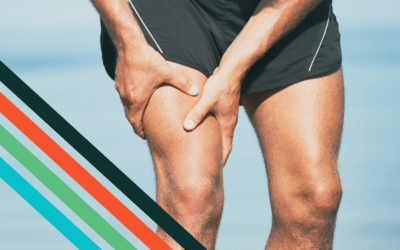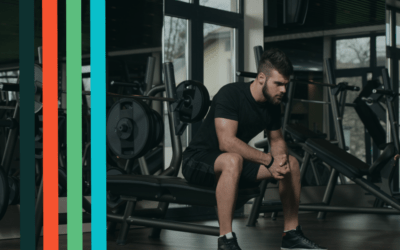Introduction: Misconceptions About Hip Tightness
Many people experience “tight hip flexors” and associate it with stiffness or assume they simply haven’t been stretching enough. As a result, they may seek massages or visits to physical therapists to “loosen up” the area. However, these approaches often fail to address the deeper issue, leading to hip stiffness and tightness returning again and again.
A common misconception about tightness is that it’s purely a flexibility issue that can be fixed by stretching. If we ignore the issue, tightness and compensation can hurt our daily movement and athletic performance. Relying only on passive solutions won’t help.
In this blog, we’ll explore the symptoms, causes, and actionable strategies to address tight hip flexors while providing insights into sustainable, long-term solutions for a stronger, more functional foundation. After reading, if you still need help, you can contact us or get some free advice.
Symptoms of Tight Hip Flexors
Tight hip flexors can manifest in a variety of ways, often making everyday activities uncomfortable or limiting athletic performance. If you’ve experienced any of the following symptoms, your hip flexors might be to blame:
- Front-of-Hip or Thigh Tightness: A common feeling of stiffness or discomfort at the front of the hip or upper thigh, especially during movement.
- Difficulty with Leg Extension: Challenges in extending the leg out to the side or back without feeling restricted or experiencing pain.
- Lower Back Pain: Tight hip flexors often cause lumbar discomfort, particularly when standing up straight or trying to fully extend the hips.
- Seized-Up Sensation After Sitting: Prolonged sitting can make the hip flexors feel tight or “locked up,” leading to discomfort when transitioning to standing.
- Postural Struggles: Difficulty maintaining an upright posture while sitting or standing due to compensatory tightness in the hip area.
Where Does Hip Discomfort Come From?
The hip flexor muscles, including the iliopsoas, rectus femoris, TFL, and sartorius, play a central role in connecting the lumbar spine, pelvis, and femur. Tightness often originates in areas where these muscles attach:
Iliopsoas: Connects the lumbar spine to the inner femur, contributing to hip flexion and lumbar stability. Tightness here is often felt deep in the front of the hip.

Rectus Femoris: A quadriceps muscle that spans both the hip and knee joints, attaching to the pelvis and lower leg. This muscle can feel tight along the front of the thigh.

TFL (tensor fasciae latae): A small muscle on the outer hip that connects the pelvis to the IT band. It aids in hip flexion, abduction, and stability during movement. Tightness here sometimes radiates toward the knee.

Sartorius: The longest muscle in the body, running from the pelvis to the inner knee, can contribute to discomfort in the upper thigh and groin.

What Causes Hip Flexor Tightness?
Hip flexor tightness is often a result of deeper, underlying issues rather than a simple lack of stretching. Understanding these causes can help you address the problem at its root and prevent the cycle of recurring tightness.
1. True Muscle Shortness
Sometimes, the hip flexors are genuinely short, not just tight. This occurs when the muscles adapt to a consistently shortened position, limiting their ability to lengthen and function properly. Opening them up with targeted mobility exercises can help restore their normal range.
2. Weakness
Weak hip flexors struggle to meet demands, often compensating by tightening to protect themselves.
- Prolonged Sitting: Sitting for long periods weakens the hip flexors and leaves them fatigued, less able to handle stabilizing tasks.
- Muscle Overload: Insufficient strength leads to reflexive tightness and discomfort during movement.
3. Volume & Overload
Excessive demand or improper progression in activities can overwork the hip flexors.
- Overuse: Activities like running or cycling performed with high volume too quickly can overload the hip flexors.
- Compensations: Weak glutes or poor core stability shift the workload onto the hip flexors, leading to chronic tightness.
4. Bony Limitation
Structural issues in the hip joint can restrict movement.
- Bone Spurs: Extra bone growth or deformities can impede motion and cause a feeling of tightness.
- Joint Space Restrictions: Limited space within the joint can block mobility, requiring professional intervention to address.
5. Capsular Issues
The joint capsule itself can be a source of restriction.
- Capsular Tightness: Stiffness or adhesions in the joint capsule limit motion, often mistaken for muscle tightness. Joint mobilizations can help when properly diagnosed.
6. Protective Tightness
Tightness can be the body’s way of protecting vulnerable areas.
- Weak Low Back: When the lumbar spine lacks stability, the hip flexors tighten to compensate, leading to chronic discomfort.
7. Neural Tension
Nerve sensitivity can mimic or amplify hip flexor tightness.
- Spinal Issues: A herniated disc or irritation of spinal nerves can cause the hip flexors to flare up as a protective response, making them feel tight even if the muscle itself isn’t the problem.
8. Previous Injury
Past injuries can leave lasting effects that contribute to hip flexor tightness.
- Soft Tissue Restrictions: Scar tissue or adhesions from previous injuries limit the range of motion and create a sensation of tightness.
9. Protective Spasm
Sometimes, the hip flexors spasm to shield another area at risk.
- Joint Protection: If another joint, like the lumbar spine or hip joint, is unstable or injured, the hip flexors may reflexively tighten to compensate and prevent further harm.
For the purpose of this blog, we’re mainly talking about how to improve and fix problems 1 through 3, and maybe 8 to some extent. If you have issues related to some of the other potential ways hip flexors get tight, consult with your health care professional.
Ways to Improve Tight Hip Flexors
Addressing tight hip flexors requires a multifaceted approach that focuses on strengthening, stretching, and improving movement awareness. These strategies not only relieve tightness but also prevent it from returning.
Strengthen the Hip Flexor Muscles
Building strength in the hip flexors is essential to increase their ability to handle loads and reduce reflexive tightness. Stronger hip flexors have a higher capacity to perform without becoming fatigued or overloaded.
Try these exercises to release some of the tightness, and to build hip flexor and glute med strength. Perform 2–3 sets of 10–15 reps with control:
- TFL self myofascial release
- Side-Lying Leg Lifts (Knee Bent or Straight)
- Supine Banded Hip Flexion
- Standing Banded Hip Flexion
- Seated Hip Flexor Liftoffs
- Monkeyfoot Standing Hip Flexion
- Monkeyfoot Supine Eccentric Hip Flexion
- Hollow body liftoffs
Stretch the Hip Flexors (Active and Passive)
While strengthening is key, incorporating stretching helps increase range of motion and alleviate tension in the hip flexors. Research shows that stretching hip flexors—even for durations up to 120 seconds—does not impair performance (Konrad et al., 2021). In fact, stretching for 30–120 seconds may improve function, with longer durations (up to 8 minutes) showing additional benefits for flexibility.
Active and passive stretches to try:
- Couch Stretch with Posterior Pelvic Tilt
- Psoas Self-Myofascial Release
- Barbell Quad Self-Myofascial Release
Develop Awareness of Pelvic Positioning
Postural awareness is a crucial component of improving hip flexor tightness. Misaligned pelvic positioning, such as excessive anterior tilt, keeps the hip flexors in a shortened state.
- During Workouts: Focus on engaging your core and glutes to maintain neutral pelvic alignment.
- In Daily Movements: Check in with your posture during standing, sitting, or walking to avoid overloading the hip flexors unnecessarily.
By combining strength training, stretching, and postural awareness, you can address the underlying causes of tight hip flexors and support long-term hip health and performance.
What are “Hip Foundations”?
The concept of Hip Foundations represents the essential elements of hip strength and control—factors that work together to ensure your hips function efficiently, remain pain-free, and can handle the demands of daily life and athletic performance. Here’s what makes up the foundations:
Strength
Building strength in your hip muscles goes beyond just moving through ranges of motion—it prepares your joints to handle greater forces and reduces the likelihood of pain or injury. Increasing your baseline strength equips your hips to manage future loads and improves joint stability.
A comprehensive program targeting the glutes, hip flexors, quads, hamstrings, core, and hip rotators ensures all foundational muscles are working in harmony. By strengthening these groups, you address the root causes of tightness, pain, and instability.
These principles form the foundation of Hip Foundations—our program designed to help you build strength, mobility, and control for resilient, pain-free movement. Whether you’re looking to enhance athletic performance, recover from injuries, or simply move better, the Hip Foundations approach equips your hips to handle the demands of life and sport with ease.
Muscular Balance
Balanced strength between key muscle groups, such as the glutes, hip flexors, and rotators, is critical to avoiding compensations and dysfunction. Imbalances can lead to overuse injuries and impair how effectively your hips function.
Mobility and Stability
The ability to move through a full range of motion, while maintaining control under load, is vital for functional and healthy hips. Mobility without stability can result in poor movement patterns, while stability without mobility can lead to stiffness and limited function.
Posture and Alignment
Proper alignment of the pelvis and spine plays a significant role in hip health. For instance, anterior pelvic tilt, often caused by weak glutes and core muscles, places undue strain on the hip flexors, keeping them in a shortened position and contributing to tightness.
Addressing Asymmetries
Hips that are out of balance—where one side is stronger or more mobile than the other—can lead to long-term issues. Identifying and correcting these asymmetries through unilateral exercises helps create symmetry and ensures the ball-and-socket joint stays centred during movement.
Find all this and more in our Hip Foundations Program.

Conclusion
Tight hip flexors are common, but understanding their symptoms and root causes is the key to relief. Weakness and poor posture often drive the cycle of tightness and discomfort, and the solution lies in building strength, improving alignment, and optimizing movement.
Apply the tips shared here to start improving your hip health today. For a more guided approach, our Hip Foundations Program is designed to help you build strength, mobility, and control for pain-free, functional movement. Stronger hips mean better movement—make them your foundation.

More About The Author
Carla Robbins, Owner of Vital Strength and Physiology Inc
Carla’s journey into the world of endurance training, strength and conditioning, and exercise physiology began with her Undergraduate Degree in Exercise Physiology at the University of Calgary and continued into her graduation with a Master’s in Exercise Physiology in 2016. Between working for the Canadian Sports Institute to the creation of her company Vital Strength and Physiology Inc, Carla is driven by a desire to find better ways to address complex cases in professional and everyday athletes and individuals.
References
Konrad, A., Močnik, R., Titze, S., Nakamura, M., & Tilp, M. (2021). The influence of stretching the hip flexor muscles on performance parameters. A systematic review with meta-analysis. In International Journal of Environmental Research and Public Health (Vol. 18, Issue 4, pp. 1–20). MDPI AG. https://doi.org/10.3390/ijerph18041936
Winters, M. v., Blake, C. G., Trost, J. S., Marcello-Brinker, T. B., Lowe, L., Garber, M. G., & Wainner, R. S. (2004). Passive Versus Active Stretching of Hip Flexor Muscles in Subjects With Limited Hip Extension: A Randomized Clinical Trial. Physical Therapy, 84(9).



